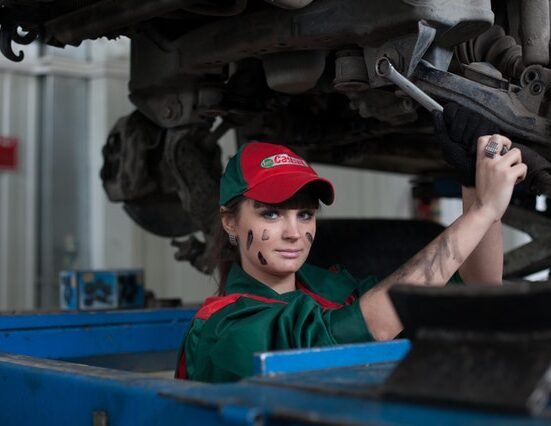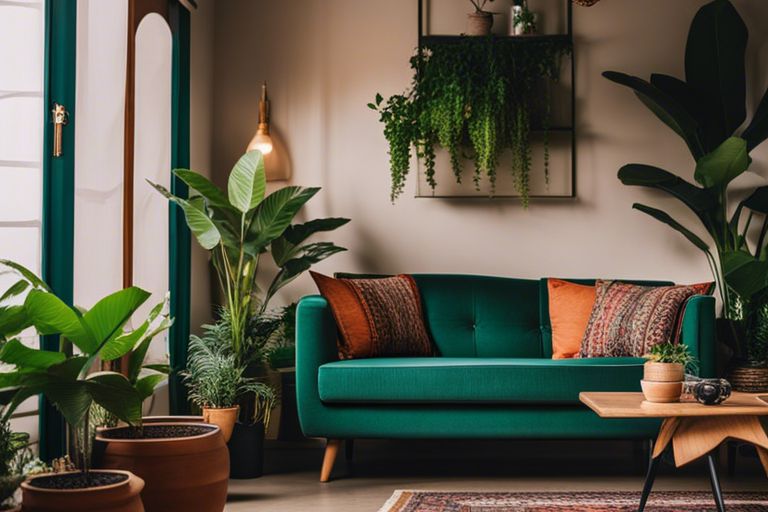In a world where sustainability is becoming increasingly crucial, it’s essential to transform our living spaces into eco-friendly havens. With India’s rapid urbanization, it’s more important than ever to adopt conscious consumerism and adopt sustainable practices. This guide will explore the world of upcycling and DIY projects that will not only help you reduce your carbon footprint, but also add a unique, personal touch to your urban home. From repurposing old furniture to creating reusable household items, we’ll provide you with practical and creative ideas to greenify your living space. Get ready to embark on a journey towards a more environmentally conscious lifestyle as we delve into the art of sustainable style in urban India.
Table of Contents
Key Takeaways:
- Upcycling: Embracing the concept of upcycling can help reduce waste and create unique, eco-friendly home decor and furnishings.
- DIY Projects: Engaging in do-it-yourself projects allows homeowners to customize their space while minimizing environmental impact through repurposing materials.
- Greener Urban Home: Implementing sustainable style practices can transform urban homes in India into environmentally friendly spaces without sacrificing style and design.
Types of Upcycling and DIY Projects
While upcycling and DIY projects can encompass a wide range of creations, there are a few key categories that are particularly popular in the realm of sustainable style. Knowing the different types of upcycling and DIY projects can help individuals choose the right avenues for their skills and interests. Importantly, the following information will be broken down into a table with 2 columns and 5 rows.
Furniture and Décor Upcycling
Any home can benefit from furniture and décor upcycling projects, which offer the opportunity to turn old, worn-out items into stylish, one-of-a-kind pieces. Whether it’s refurbishing an old dresser, repurposing wooden pallets into a new coffee table, or creating unique wall art from reclaimed materials, furniture and décor upcycling allows individuals to breathe new life into their living spaces while reducing waste and environmental impact.
Textile and Fashion Transformation
Furniture and décor upcycling is just one aspect of creating a sustainable home. Textile and fashion transformation is another avenue for upcycling, offering individuals the chance to repurpose old clothing, fabric scraps, and other textiles into new garments, accessories, or household items. Types of projects within this category include sewing new pieces, dyeing fabrics, and embellishing existing items to give them a fresh, updated look.
Knowing how to transform old textiles and fashion pieces can be an incredibly rewarding skill that not only reduces waste but also allows individuals to express their creativity through sustainable means.
Electronic and Appliance Repurposing
One often overlooked area of upcycling and DIY projects is electronic and appliance repurposing. Instead of discarding old electronics and appliances, individuals can instead give them new life through creative repurposing. This might involve turning an old television into a unique fish tank, using old computer parts to create artwork, or repurposing kitchen appliances into functional decor pieces.
Transforming electronic and appliance items in this way not only keeps them out of landfills, reducing e-waste and environmental harm, but also provides the opportunity for inventive and practical new uses for outdated technology.
Tips for Successful Upcycling and DIY
For successful upcycling and DIY projects, it is important to keep certain tips in mind:
- Plan your project carefully
- Use high-quality materials and tools
- Research different upcycling and DIY techniques
- Be patient and persistent
- Seek inspiration from other successful projects
After following these tips, you are more likely to achieve success in your upcycling and DIY projects.
Sourcing Materials and Tools
To create sustainable style through upcycling and DIY, it is important to source materials and tools responsibly. Consider using reclaimed wood, local textiles, and eco-friendly paints and sealants. Responsible sourcing not only reduces environmental impact, but also supports local craftsmen and suppliers.
Designing with Sustainability in Mind
Sourcing materials is just the beginning. Tools and equipment should also be eco-friendly and energy-efficient, minimizing the impact on the environment. Upcycling and DIY projects are a way to contribute positively to sustainability in the urban home.
Collaborating with Local Communities
To foster a sense of community and contribute to sustainability on a larger scale, consider collaborating with local artisans, NGOs, and community organizations. This not only adds cultural value to your project, but also supports the local economy and promotes social good.
Mind, by engaging with local communities, you can learn new techniques and gain valuable insights into sustainable practices.
Step-by-Step Guide to Selected Projects
Now, let’s dive into the detailed step-by-step guide for some of the selected upcycling and DIY projects that can help you create a greener urban home in India.
Transforming Old Bottles into Decorative Pieces
For a simple and creative upcycling project, start by collecting old bottles from your home or neighbors. Re-purpose these bottles into decorative pieces by cleaning them thoroughly and then painting them in vibrant colors. You can also wrap twine or jute around them for a rustic look.
Repurposing Discarded Fabrics into Functional Art
Functional art can bring style and sustainability into your home. Transform discarded fabrics into colorful throw pillow covers, tote bags, or even wall hangings. With a few sewing skills and creativity, you can breathe new life into old fabric, giving them a new purpose and aesthetic appeal.
Bottles, fabrics, sustainability, creativity, upcycling, DIY projects
Upcycling Pallets into Urban Garden Planters
Discarded pallets are a treasure trove for transforming into urban garden planters. Start by cleaning and sanding the pallets. Then, repurpose them into vertical garden planters or raised bed gardens. These versatile planters not only add greenery to your urban space but also contribute to sustainable living.
Pallets, urban, garden, sustainability, repurpose, greenery
Factors to Consider for Upcycling and DIY in Indian Homes
Not all homes in India are suited for large-scale upcycling and DIY projects, especially in urban settings where space constraints and availability of resources play a crucial role. Sustainable style enthusiasts must take these factors into consideration when embarking on their greener home journey.
- Space constraints
- Availability of upcycling resources
- Cultural and aesthetic preferences
Though these factors may pose challenges, they can be overcome with careful planning and creative solutions.
Space Constraints in Urban Settings
With the rise of high-rise apartments and compact living spaces in urban India, finding room for upcycling and DIY projects can be challenging. Limited space for storage and workspace may need to be carefully considered when taking on such sustainable endeavors.
Availability of Upcycling Resources
To fully embrace the sustainable lifestyle, one must consider the availability of upcycling resources in their local settings. Access to materials, tools, and guidance can vary greatly depending on the region and community.
Settings in urban India may offer a wide range of opportunities for upcycling and DIY, but it’s important to be aware of the limitations and challenges that come with it.
Pros and Cons of Upcycling and DIY
Keep in mind that upcycling and DIY projects have their own set of advantages and disadvantages. Here’s a breakdown of the pros and cons:
| Pros | Cons |
| Reduced waste and environmental impact | Time-consuming |
| Cost-effective | May require specialized skills |
| Opportunity for creativity and personalization | Potential for imperfect results |
| Encourages resourcefulness and innovation | Difficulty in sourcing materials |
| Promotes self-sufficiency and independence | Not suitable for mass production |
| Supports local artisans and craftsmen | May not always meet quality standards |
| Customization to personal preferences | Potential for safety hazards |
| Reduces reliance on consumerism | Can be emotionally taxing |
| Promotes a sense of accomplishment | Can lead to accumulation of clutter |
| Connects individuals to their possessions | Requires storage space for materials |
Environmental Benefits and Challenges
Pros of upcycling and DIY projects include reducing waste and environmental impact, while challenges may involve facing difficulty in sourcing materials and potential for imperfect results. Embracing sustainable style through upcycling and DIY can contribute to a 48 Urban Recycle Art ideas | eco friendly art, diy upcycle … to inspire and guide the creative process.
Economic Implications for Indian Households
On the economic front, engaging in upcycling and DIY projects can be cost-effective, promoting a reduced reliance on consumerism. It also supports local artisans and craftsmen, but may not always meet quality standards.
It is important for Indian households to consider the potential for time-consuming projects and the need for storage space for materials when taking on upcycling and DIY endeavors.
Conclusion
On the whole, ‘Sustainable Style – Upcycling and DIY Projects for a Greener Urban Home in India’ provides valuable insights and practical tips for individuals looking to embrace a more sustainable lifestyle. By emphasizing the importance of upcycling and DIY projects, the book not only promotes environmental awareness but also encourages readers to take an active role in reducing waste and minimizing their ecological footprint. Through the guidance and suggestions offered in this book, individuals in India can easily incorporate sustainable practices into their urban homes, ultimately contributing to a greener and more environmentally conscious society.
FAQ
Q: What is upcycling and how does it promote sustainability in urban homes in India?
A: Upcycling is the process of reusing discarded materials or products to create new items of higher value. This promotes sustainability in urban homes in India by reducing waste, conserving resources, and minimizing the environmental impact of consumption. Upcycling also encourages creativity and self-sufficiency, making it a practical and eco-friendly approach to home decor and design.
Q: What are some popular upcycling and DIY projects for greener urban homes in India?
A: Popular upcycling and DIY projects for greener urban homes in India include repurposing old furniture, creating decorative items from waste materials such as glass bottles or plastic containers, and making use of sustainable and locally sourced materials for home decor and renovation. Additionally, urban gardening, composting, and sustainable energy solutions are also integral to the concept of sustainable style in urban Indian homes.
Q: How can individuals in India incorporate sustainable style and upcycling into their urban homes?
A: Individuals in India can incorporate sustainable style and upcycling into their urban homes by practicing mindful consumption, embracing minimalist and functional design principles, and supporting local artisans and eco-friendly initiatives. They can also participate in community-based sustainability programs, share knowledge and resources with neighbors, and explore innovative upcycling and DIY techniques through workshops and online resources. By making conscious choices and taking small steps towards sustainability, individuals can contribute to a greener urban environment in India.






